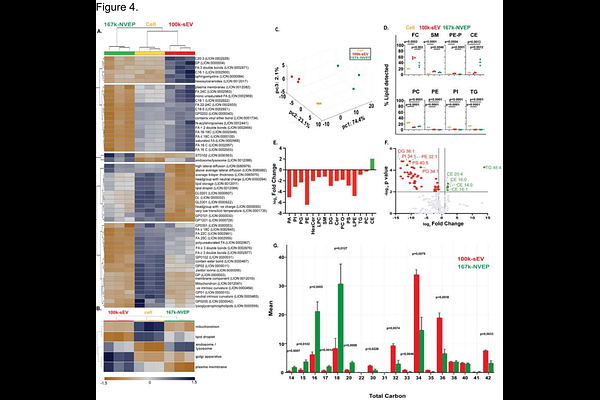Cholesteryl esters and high protein-to-lipid ratios distinguish Non-Vesicular Extracellular Particles from Extracellular Vesicles

Cholesteryl esters and high protein-to-lipid ratios distinguish Non-Vesicular Extracellular Particles from Extracellular Vesicles
Ghosal, S.; Leporati, R.; Varga, A.; Susanszki, P.; Fekete, N.; Laszlo, T.; Barkai, T.; Grebecz, F. K.; Khamari, D.; Magyar, T. Z.; Hoering, M.; Vukman, K. V.; Bodnar, B. R.; Kestecher, B. M.; Fattah, M. A.; Bodor, C.; Maleth, J.; Liebisch, G.; Orso, E.; Buzas, E. I.; Osteikoetxea, X.
AbstractExtracellular vesicles (EVs) are central to intercellular communication, yet the mechanisms underlying their biogenesis and diversity remain incompletely understood. Here, we integrate cross-kingdom meta-analysis, advanced lipidomic, protein-to-lipid profiling, and super-resolution imaging to define the fundamental principles governing EV heterogeneity. Our meta-analysis of published transmission electron microscopy (TEM) data reveals a highly conserved upper size limit (~200 nm) for intraluminal vesicles (ILVs) across species, supporting the use of this size threshold to define endosome-derived EVs. Besides classical EV populations, we also characterize a distinct nanoparticle class: 167000 xg pellet of non-vesicular extracellular particles (167k-NVEPs). NVEPs exhibit a significantly higher protein-to-lipid ratio than 14000 xg pellet of large EVs (14k-lEVs) and 100000 xg pellet of small EVs (100k-sEVs), as measured by both biochemical assays and Raman spectroscopy. Lipid profiling demonstrates that 167k-NVEPs exhibit significant enrichment in cholesteryl esters and triacylglycerol, lipids typically associated with lipid droplets and the endosome/lysosome system. Analysis of lipid carbon-chain lengths reveals distinct signatures: 167k-NVEPs show pronounced enrichment at 16 and 18 carbons, while 100k-sEVs display enrichment at 32 and 34 carbons. This divergence indicates a potential connection to flexible biogenesis pathways. Marker heterogeneity across EV populations, confirmed by confocal and super-resolution microscopy, further underscores the limitations of relying on canonical tetraspanins for EV classification. Notably, 167k-NVEPs (likely exomeres) exhibit enrichment of Arf6 and CD63. Together, our findings provide compositional, biophysical, and molecular evidence supporting the formal recognition of 167k-NVEPs as a distinct class of extracellular particles and enabling exploring in disease biology and therapeutic delivery.